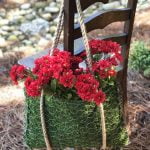English cottage gardens ideas are a delightful way to bring the charm of the English countryside into your own backyard. These gardens are known for their lush, informal beauty and their ability to attract a wide variety of birds and butterflies. In this article, we will explore the history of English cottage gardens, the key elements that make them so unique, and provide you with inspiration and tips for creating your very own English cottage garden paradise.
The history of English cottage gardens dates back to the 16th century when they were first cultivated for practical purposes, such as providing food and medicinal herbs for households. Over time, these gardens evolved into beautiful, romantic landscapes overflowing with colorful flowers, aromatic herbs, and winding paths. Today, English cottage gardens remain beloved for their natural aesthetic and timeless appeal.
Key elements of English cottage gardens include a mix of annuals and perennials, densely planted borders, trellises covered in climbing plants, and meandering pathways. When it comes to plant selection, there is a wide range of flowers and herbs that thrive in this type of garden.
From old-fashioned roses to fragrant lavender and delicate foxgloves, there are endless options for creating a diverse yet cohesive planting scheme in your own English cottage garden. Stay tuned as we delve deeper into design and layout ideas as well as seasonal maintenance tips for bringing your vision to life.
History of English Cottage Gardens
The history of English Cottage Gardens dates back to the 16th century, when small plots of land surrounding cottages were cultivated for both practical and aesthetic purposes. Initially, these gardens were intended to provide food for the cottage’s inhabitants, but over time they evolved into a vibrant display of colorful flowers and lush greenery.
The term “cottage garden” was coined in the late 19th century as a way to describe this unique style of gardening that has become iconic of English countryside charm.
Origins
The origins of English Cottage Gardens can be traced back to the medieval period when peasants cultivated small patches of land around their humble cottages. These gardens were not only practical, providing fruits, vegetables, and medicinal herbs for the household, but they also served as a form of self-expression and beauty amidst the otherwise harsh living conditions. Over time, these functional gardens transformed into visually appealing landscapes filled with an assortment of colorful flowers.
Influence on Landscape Design
The quaint and unstructured nature of English Cottage Gardens has had a lasting influence on landscape design around the world. This informal style is characterized by its mix of plants and flowing layout, which contrasted sharply with the formal gardens popularized by French and Italian designs during the Renaissance period. Today, many homeowners seek to incorporate elements from English Cottage Gardens into their own landscapes as a way to capture the romantic allure associated with traditional country homes.
With its rich history dating back centuries, it’s no wonder that English Cottage Gardens continue to captivate gardening enthusiasts today. Whether you are interested in delving into historical gardening traditions or simply want to create a picturesque backyard retreat, embracing the principles of these timeless gardens can breathe new life into any outdoor space.
Key Elements of English Cottage Gardens
The key elements of English cottage gardens are what give them their unique and charming appeal. These gardens are known for their informal, yet abundant and colorful look. One of the main features of an English cottage garden is the use of a mix of flowers, herbs, and vegetables all growing together in harmony. This creates a relaxed and natural feel that is characteristic of these traditional gardens.
Another key element of English cottage gardens is the use of traditional materials such as stone, brick, wood, and wrought iron. These materials are often used to create pathways, borders, trellises, and other decorative elements within the garden. Additionally, features like arbors and picket fences are commonly found in English cottage gardens, adding to their old-world charm.
Lastly, a crucial aspect of creating an authentic English cottage garden is incorporating wild and rambling elements into the design. This can be achieved by allowing certain plants to grow freely or by strategically placing climbing vines and sprawling perennials throughout the garden. The goal is to achieve a slightly untamed look that mimics the natural beauty found in the English countryside.
| Key Elements | Description |
|---|---|
| Mix of flowers, herbs, and vegetables | An abundant and colorful mix creates a relaxed and natural feel |
| Traditional materials | Use of stone, brick, wood, and wrought iron for pathways, borders, trellises |
| Wild and rambling elements | Incorporating climbing vines and sprawling perennials for an untamed look |
Plant Selection for English Cottage Gardens
English cottage gardens are known for their whimsical and romantic appearance, brimming with colorful flowers and lush greenery. When it comes to creating your own English cottage garden, choosing the right plants is essential. Here are some plant selection ideas to help you achieve that traditional English cottage garden look:
1. Roses: No English cottage garden would be complete without a variety of roses. From climbing roses to old-fashioned varieties, these fragrant blooms add a touch of nostalgia and charm to the garden.
2. Perennials: Fill your cottage garden with an assortment of perennial flowers such as peonies, delphiniums, lupines, and daisies. These long-lasting plants will return year after year, adding beauty and color to your garden.
3. Herbs: Incorporating herbs like lavender, rosemary, and thyme not only adds fragrance to your garden but also provides a practical purpose in the kitchen.
4. Climbing Plants: To achieve that lush, overgrown look typical of English cottage gardens, consider adding climbing plants like clematis, honeysuckle, or wisteria along fences or trellises.
5. Wildflowers: Scatter wildflower seeds throughout your garden for a natural and casual look. Flowers such as poppies, foxgloves, and cosmos will add a carefree charm to your landscape.
By carefully selecting a mix of these plants that thrive in your specific growing conditions and climate zone, you can create a beautiful English cottage garden that captures the essence of this classic gardening style. Whether you have limited space or an expansive backyard, there are endless possibilities for incorporating these plant selection ideas into your own English cottage garden design.
Design and Layout Ideas for English Cottage Gardens
When it comes to creating an English cottage garden, the design and layout play a crucial role in capturing the essence of this charming and romantic style. Here are some ideas to consider when planning your own English cottage garden:
1. Mix of Flowers, Herbs, and Vegetables: One of the key elements of English cottage gardens is the combination of flowers, herbs, and vegetables. Create a harmonious balance by mixing colorful blooms such as roses, peonies, and lavender with functional plants like thyme, sage, and parsley. This not only adds visual interest but also serves a practical purpose.
2. Informal Pathways: Instead of straight and formal walkways, opt for meandering paths made of gravel or stepping stones to create a more relaxed and inviting feel. These pathways should wind through the garden, allowing visitors to explore and discover hidden nooks and crannies.
3. Vertical Accents: Incorporate vertical elements such as arbors, trellises, or obelisks to add height and structure to your English cottage garden. Train climbing roses or clematis to grow over these structures for added charm.
Remember that English cottage gardens are all about embracing nature in its most organic form. Avoid rigid symmetry and let your plants grow in a naturalistic way to achieve that timeless rustic beauty.
By implementing these design and layout ideas, you can transform your backyard into a picturesque retreat that embodies the quintessential charm of an English cottage garden. Whether you have a small or spacious outdoor space, there are endless possibilities for creating your own version of this idyllic garden style right in your own backyard.
Seasonal Maintenance and Care Tips for English Cottage Gardens
English cottage gardens are known for their natural, seemingly effortless beauty. However, achieving and maintaining this look requires careful planning and regular maintenance. One of the key elements of a successful cottage garden is the right care at the right time. By knowing what to do in each season, you can ensure that your garden remains a stunning display throughout the year.
In spring, it’s important to start the season off right by preparing the soil and planting new additions to your garden. This is also the time to divide perennials and start feeding your plants with a balanced fertilizer. As summer approaches, regular watering is essential, especially during dry spells when the weather is hot.
Deadheading flowers will encourage new blooms, and keeping on top of weeding will help keep your garden looking tidy. Fall brings cooler temperatures, but it’s still a busy time in the cottage garden. It’s important to remove any diseased foliage or plants to prevent diseases from overwintering in your garden.
Winter may seem like a dormant period for gardens, but there are still maintenance tasks that need attention. Protecting tender plants from frost and checking for any damage caused by winter storms are essential. Taking time to clean up debris and plan for changes or improvements will set you up for success when spring arrives. By following these seasonal maintenance tips, you can ensure that your English cottage garden remains vibrant and beautiful all year round.
| Season | Maintenance Tasks |
|---|---|
| Spring | Prepare soil, plant new additions, divide perennials, feed plants |
| Summer | Regular watering, deadheading flowers, weeding |
| Fall | Remove diseased foliage or plants, protect tender plants from frost |
| Winter | Check for damage from winter storms, clean up debris, plan for changes or improvements |
DIY Projects for English Cottage Gardens
Want to add a personal touch to your English cottage garden? DIY projects are a great way to enhance the charm and character of your outdoor space. From handmade garden structures to upcycled decor, there are plenty of creative ideas you can incorporate into your garden design.
Garden Structures
One popular DIY project for English cottage gardens is creating garden structures such as arbors, trellises, and pergolas. These features not only add visual interest to the garden but also provide support for climbing vines and flowers. You can build these structures using basic woodworking materials like lumber, PVC pipes, or even salvaged wood for a more rustic look.
Decorative Accents
Incorporating decorative accents into your English cottage garden can add a whimsical, personalized touch. Consider crafting DIY birdhouses, colorful hand-painted signs, or repurposing vintage items like old watering cans or metal buckets as planters. These unique elements will complement the relaxed, informal style of an English cottage garden.
Pathways and Edging
Creating meandering pathways and defining borders with edging materials are essential features in an English cottage garden. DIY projects for pathways can include laying down natural stone pavers, gravel or brick walkways. For edging, consider using reclaimed materials like old bricks or wooden planks to give your garden a timeless, rustic feel.
By incorporating these DIY projects into your English cottage garden design, you can infuse your outdoor space with character and creativity while staying true to the classic charm of this traditional gardening style.
How to Incorporate English Cottage Garden Ideas Into Your Own Backyard
In conclusion, incorporating English cottage garden ideas into your own backyard can bring a touch of charm and natural beauty to your outdoor space. By understanding the history and key elements of these traditional gardens, you can create a peaceful and picturesque setting that is both functional and aesthetically pleasing. With the right plant selection, design and layout ideas, as well as seasonal maintenance tips, you can easily transform your backyard into a stunning English cottage garden.
One of the most appealing aspects of English cottage gardens is their relaxed and casual atmosphere. By embracing this laid-back approach to gardening, you can create a space that feels inviting and welcoming to both visitors and wildlife. The use of DIY projects, such as creating rustic wooden trellises or installing whimsical pathways, can further enhance the charm of your garden while allowing for creative expression.
Whether you have a small patio or a spacious backyard, there are endless possibilities for incorporating English cottage garden ideas into your own outdoor oasis. By taking inspiration from the rich history and timeless appeal of these gardens, you can cultivate a space that reflects the beauty and tranquility of traditional English landscapes.
So go ahead and start planning, planting, and caring for your very own English cottage garden – it’s an investment in natural beauty that will continue to blossom for years to come.
Frequently Asked Questions
What Makes an English Cottage Garden?
An English cottage garden is characterized by its informal and romantic style, filled with a mix of flowers, herbs, and sometimes vegetables. It often includes winding paths, climbing roses, and a cozy seating area to create a charming and nostalgic atmosphere.
How Do I Make My Garden Look Like an English Garden?
To make your garden look like an English garden, focus on planting a variety of colorful flowers and greenery in a natural, unstructured arrangement. Incorporate traditional cottage garden plants such as roses, lavender, foxgloves, and delphiniums. Consider adding quaint features like a rustic bench or bird bath to enhance the ambiance.
How Do I Plan a Cottage Garden UK?
When planning a cottage garden in the UK, take into consideration the climate and soil conditions specific to your region. Select plants that thrive in the local environment and arrange them in a way that allows for natural growth and reseeding.
Incorporate elements such as stone walls or wooden fences for an authentic countryside feel. Overall, aim for an organic and relaxed design that reflects the classic charm of English cottage gardens.

Welcome to my gardening blog! I am passionate about plants and enjoy sharing my knowledge and experiences with others. In this blog, I will write about everything related to gardening, from tips on how to get started to updates on my own garden projects.





